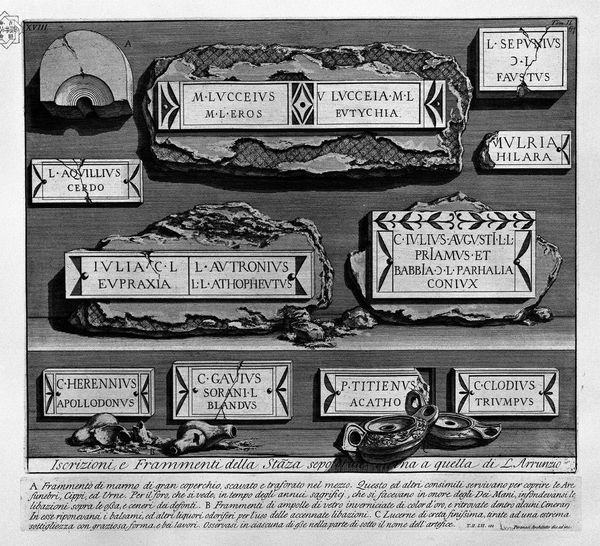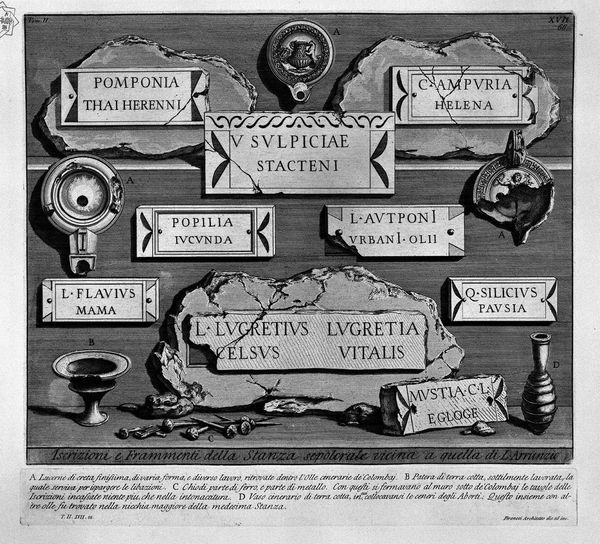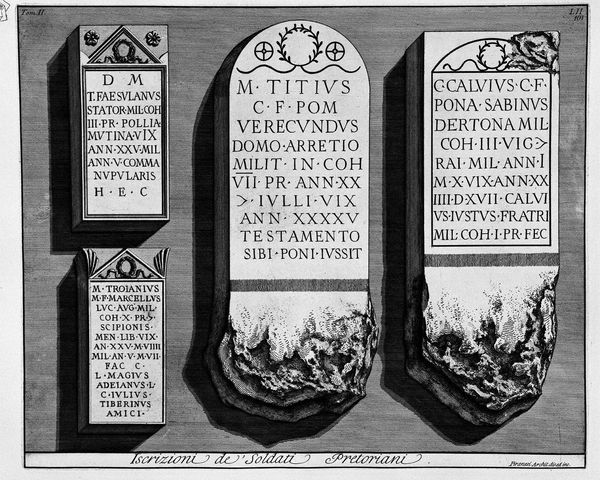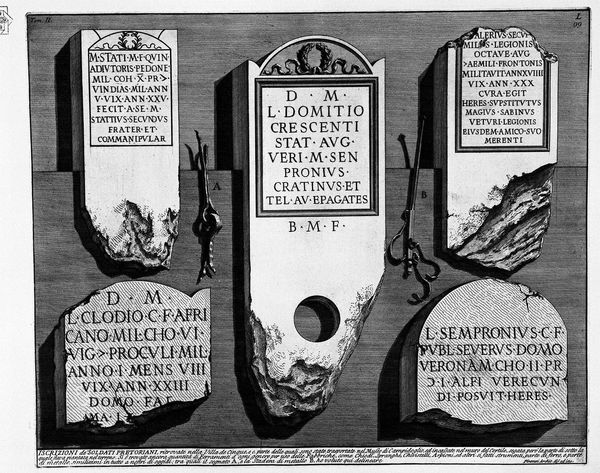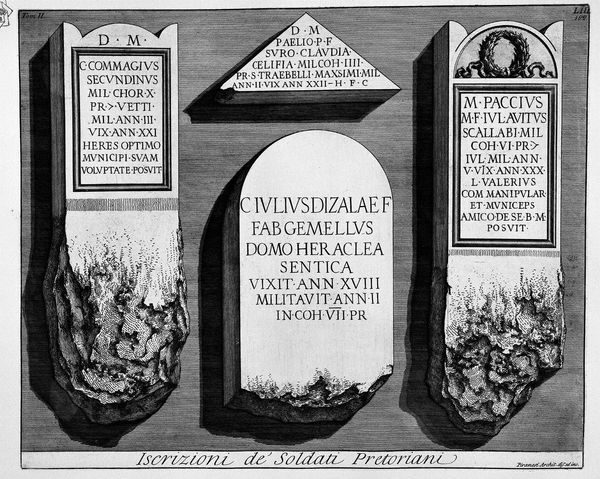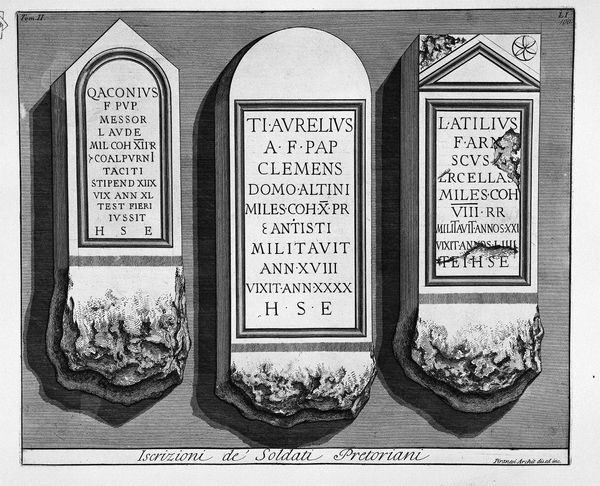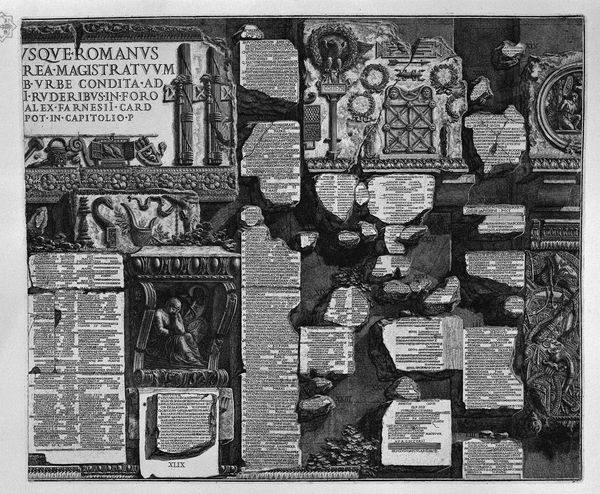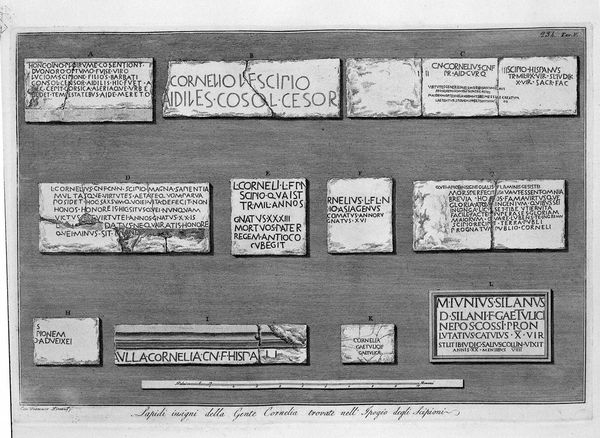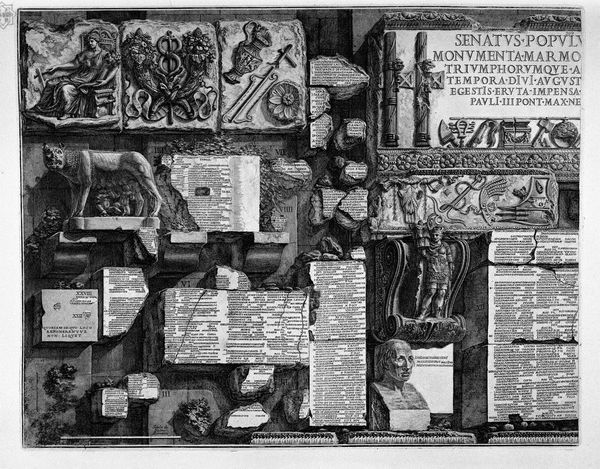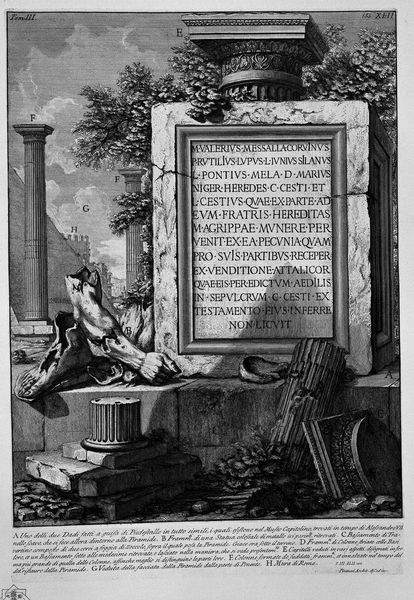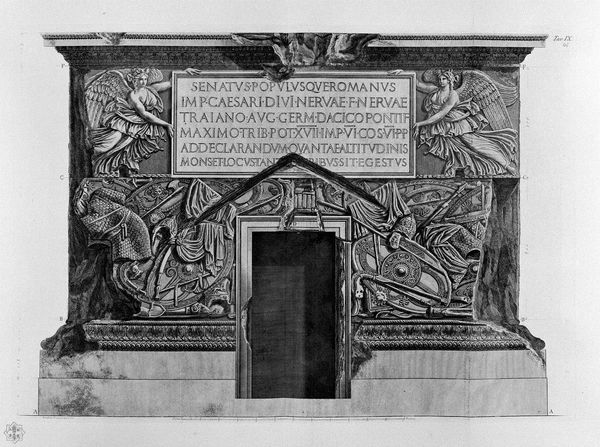
The Roman antiquities, t. 2, Plate XVIX. Inscriptions and fragments of the burial chamber above. 1756
0:00
0:00
print, engraving
# print
#
complex detailed
#
old engraving style
#
highly detailed
#
ancient-mediterranean
#
history-painting
#
engraving
Copyright: Public domain
This print by Giovanni Battista Piranesi, made in the 1700s, is an etching, painstakingly created by incising lines into a metal plate, inking it, and then pressing it onto paper. Piranesi trained as an architect, and this grounding comes across in the way he meticulously recorded inscriptions and fragments from a Roman burial chamber. Note how the smooth surfaces of the inscriptions contrast with the rough texture of the stone fragments, achieved through careful work with etching tools. The print isn’t just a record, it's also an act of interpretation. Piranesi uses a technique that requires huge labor, not unlike the masons who originally carved the inscriptions. We are reminded that behind every artifact lies immense effort – both in its original creation, and in its rediscovery and presentation to later audiences. The print thus becomes a memorial not only to individuals named in the inscriptions, but also to all the work involved in the production and preservation of culture.
Comments
No comments
Be the first to comment and join the conversation on the ultimate creative platform.
